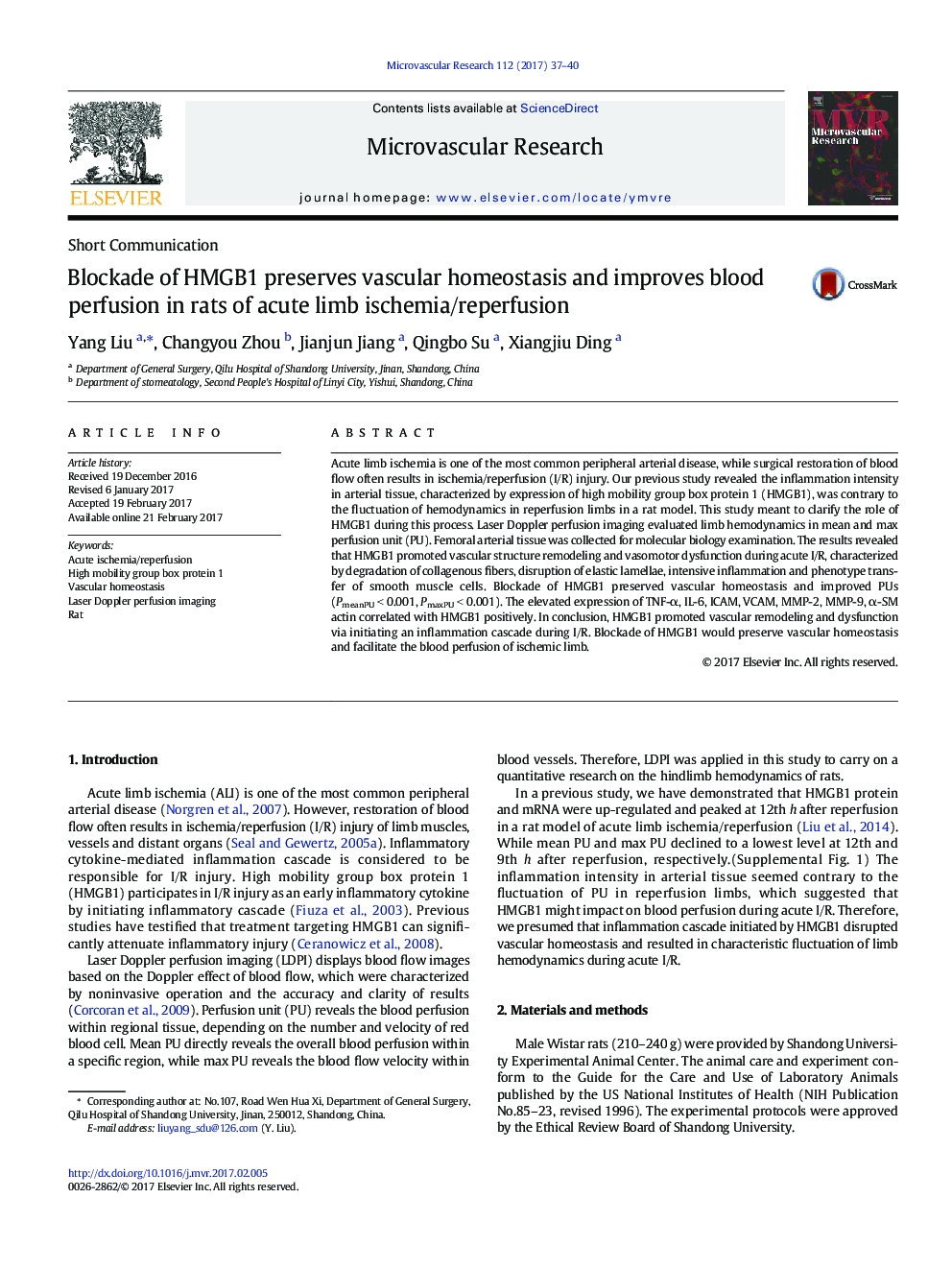| Article ID | Journal | Published Year | Pages | File Type |
|---|---|---|---|---|
| 5513779 | Microvascular Research | 2017 | 4 Pages |
Acute limb ischemia is one of the most common peripheral arterial disease, while surgical restoration of blood flow often results in ischemia/reperfusion (I/R) injury. Our previous study revealed the inflammation intensity in arterial tissue, characterized by expression of high mobility group box protein 1 (HMGB1), was contrary to the fluctuation of hemodynamics in reperfusion limbs in a rat model. This study meant to clarify the role of HMGB1 during this process. Laser Doppler perfusion imaging evaluated limb hemodynamics in mean and max perfusion unit (PU). Femoral arterial tissue was collected for molecular biology examination. The results revealed that HMGB1 promoted vascular structure remodeling and vasomotor dysfunction during acute I/R, characterized by degradation of collagenous fibers, disruption of elastic lamellae, intensive inflammation and phenotype transfer of smooth muscle cells. Blockade of HMGB1 preserved vascular homeostasis and improved PUs (PmeanPU < 0.001, PmaxPU < 0.001). The elevated expression of TNF-α, IL-6, ICAM, VCAM, MMP-2, MMP-9, α-SM actin correlated with HMGB1 positively. In conclusion, HMGB1 promoted vascular remodeling and dysfunction via initiating an inflammation cascade during I/R. Blockade of HMGB1 would preserve vascular homeostasis and facilitate the blood perfusion of ischemic limb.
